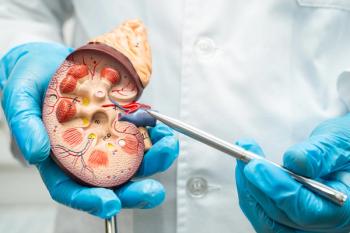
Alternative Splicing Changes May Represent Independent Oncogenic Processes
New findings suggest alterations in this process may trigger cancer progression.
Alternative splicing changes are increasingly becoming recognized as a key signature for tumor progression; however, little is understood about their functional impact.
In a study published in Cell Reports, the findings showed that a subset of alternative splicing changes affect protein domain families frequently mutated in tumors. Furthermore, they may potentially disrupt protein-protein interactions in cancer-related pathways.
The investigators sought to characterize the functional consequences of alternative splicing changes in tumors. They obtained data for more than 4000 cancer patients from The Cancer Genome Atlas.
After analyzing the changes in
“Thanks to our previous research, we know that tumor type and stage can be predicted by observing alterations in alternative splicing,” said lead investigator Eduardo Eyras. “With this new study, we have discovered that changes in alternative splicing that occur in cancer impact protein functions in a way that is similar to that previously described for genetic mutations.”
Alterations in protein functions cause changes in cell morphology and function, giving them the characteristics of tumor cells.
“These changes potentially have oncogenic power in cells, which means, the ability to turn a healthy cell into a cancer cell,” said co-author Adam Godzik.
According to the National Cancer Institute, cancer incidence is 454.8 per 100,000 men and women per year.
One interesting piece of the findings was that the changes tend to occur in genes not often mutated in cancer and in patients with a low number of mutated genes.
“Changes in alternative splicing provide cancer with new ways in which it can escape fine cellular regulation,” Godzik said. “Therefore, the study of alternative splicing opens new doors in the research to cure cancer and may provide new alternatives to the treatment of this disease.”
The authors concluded, “We propose that a subset of the alternative splicing changes observed in tumors may represent independent oncogenic processes that could be relevant to explain the functional transformations in cancer, and some of them could potentially be considered alternative splicing drivers.”
Newsletter
Stay informed on drug updates, treatment guidelines, and pharmacy practice trends—subscribe to Pharmacy Times for weekly clinical insights.


















































































































































































































